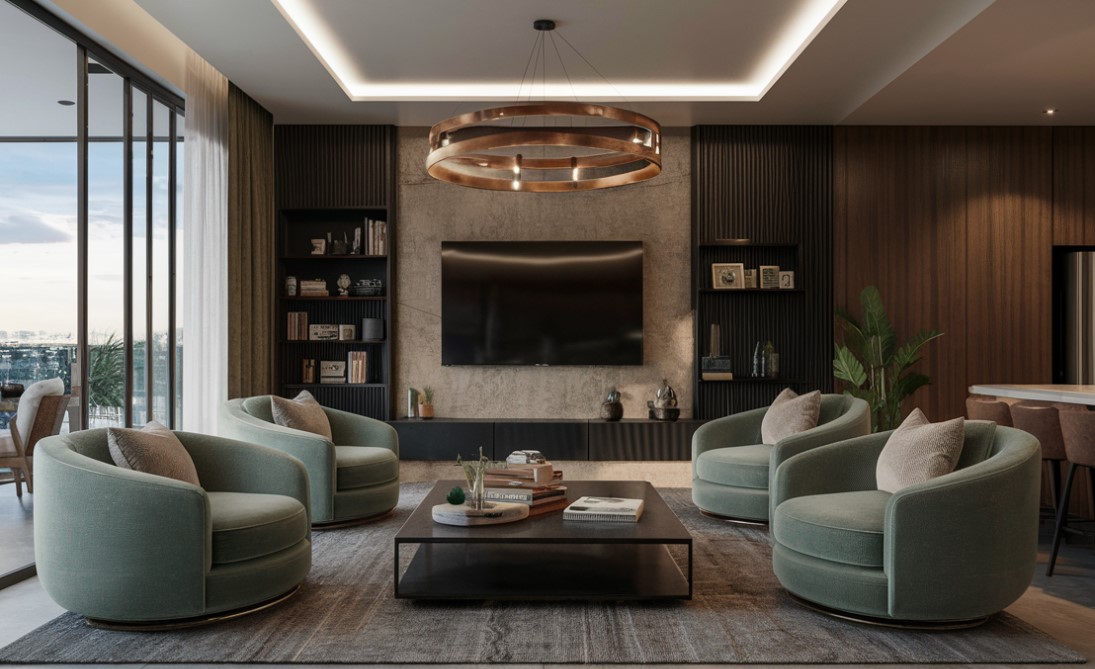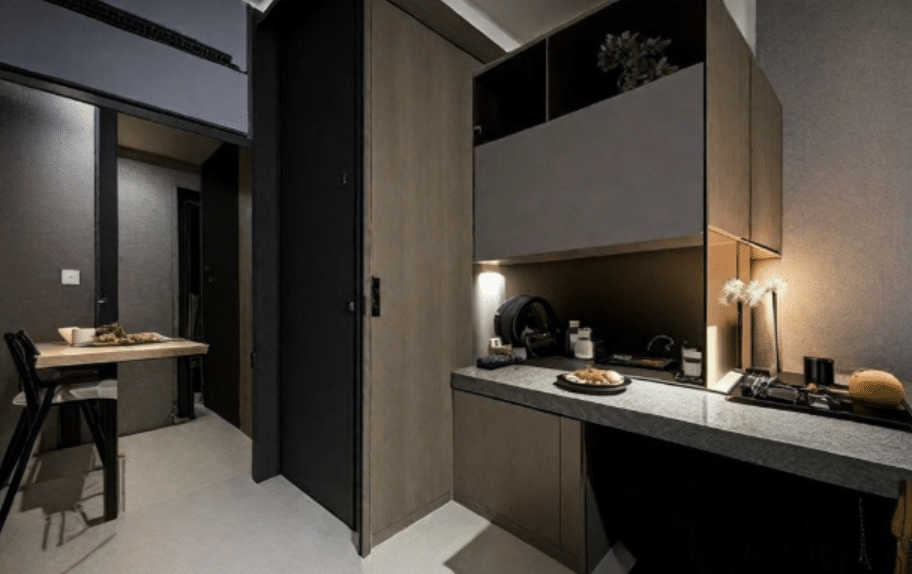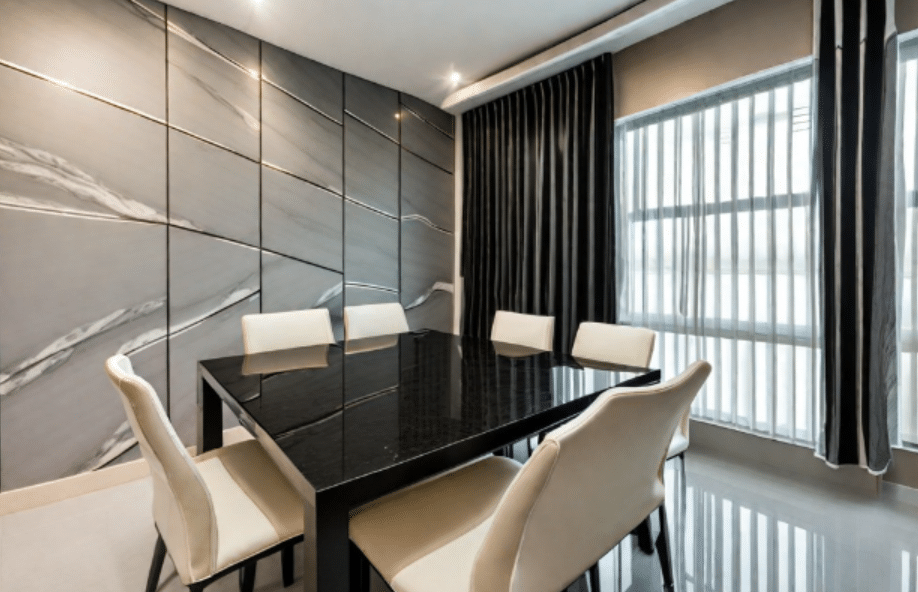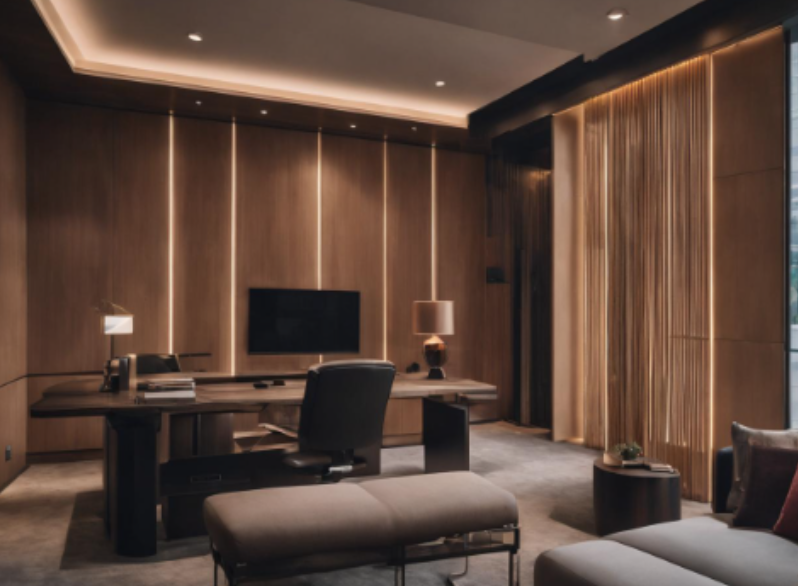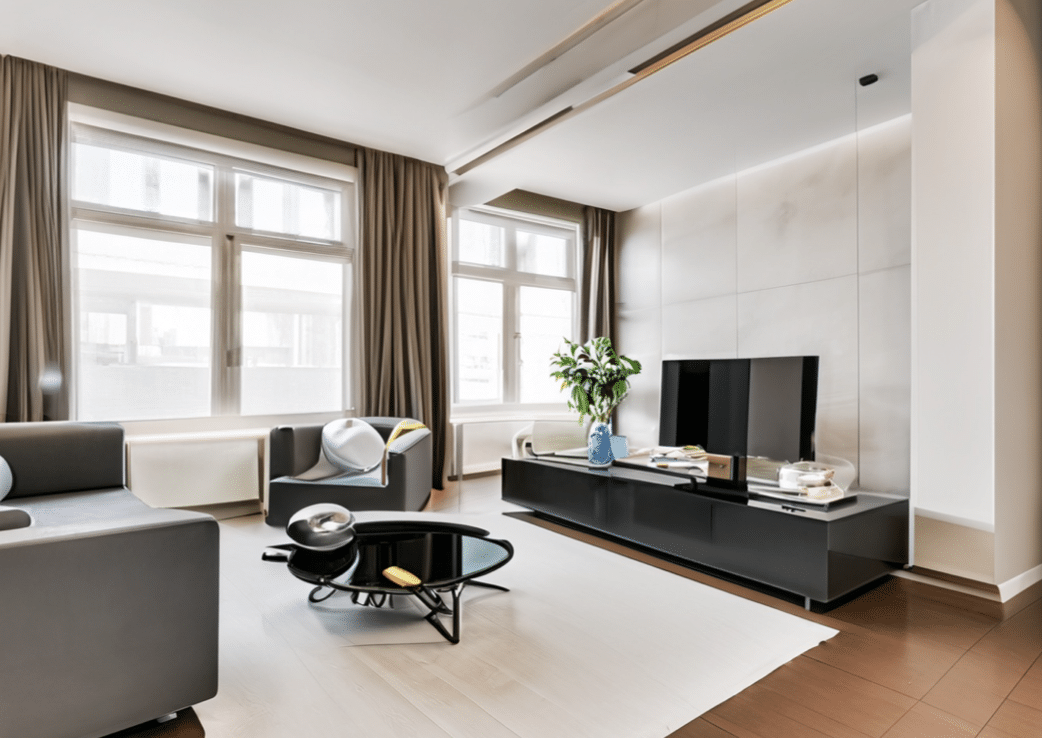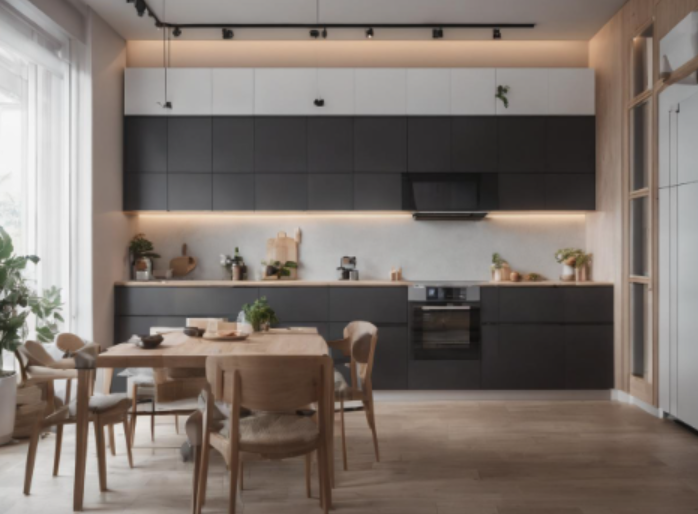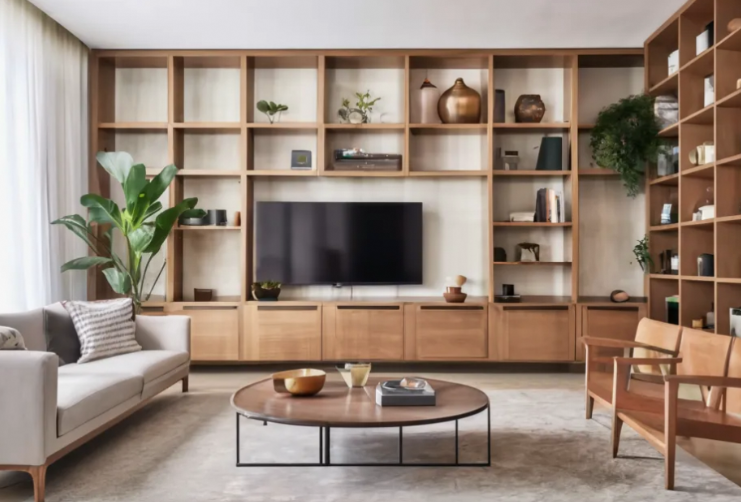6 Best Kitchen Layouts for a Flawless Cooking Experience
Imagine stepping into a kitchen that not only dazzles the eye but also flows seamlessly with your every move, where every utensil, ingredient, and appliance is exactly where you need it. This is the dream of every homeowner, and it all begins with choosing the best kitchen layout. But with so many options available, how do you know which layout will transform your space into a haven for culinary creativity?If you’re contemplating a kitchen revamp, you’re likely asking yourself, "What is the most efficient kitchen layout?" It’s a question that resonates deeply, especially when the stakes are high, such as in the compact kitchens of HDBs, BTOs, or condos. The right layout can make the difference between a chaotic cooking environment and one that feels like a natural extension of your home’s rhythm. In this guide, I will take you through the best kitchen layouts that not only elevate your cooking experience but also bring harmony to your daily routines. Here at MT Reno Diary, we understand that your kitchen isn’t just a place to prepare meals—it’s the heart of your home. That’s why we offer comprehensive renovation and interior design services tailored to your unique needs, ensuring that every aspect of your kitchen is designed with personalized attention to detail. Before you dive into the renovation process, let’s explore six popular kitchen layouts that could be the key to achieving that flawless cooking experience you’ve always desired. What Are the 6 Types of Kitchen Layouts?1. U-Shaped Layout If you’re lucky enough to have extra space in your Singapore home, a U-shaped kitchen might be the best layout for you. This design features worktops, overhead cabinets, and base cabinets that run along three adjacent walls, creating a highly efficient workspace.Pros:Ample work and storage spaceEverything is within easy reachGreat for multiple cooksSupports the addition of an island if space permitsCons:Not ideal for small spacesCan be expensiveCorners of base cabinets might be hard to access 2. L-Shaped Layout The L-shaped kitchen is one of the most popular layouts, thanks to its versatility. This design works in almost any space, making it especially convenient for small kitchens.Pros:Ideal for open-plan homesThe golden triangle works best in this layoutAllows room for corner storageCons:Can be inefficient in larger kitchensExtra space and cabinetry can mean more maintenance3. G-Shaped Layout A variation of the U-shaped layout, the G-shaped kitchen adds an extra counter—called a peninsula—that can be used as a breakfast counter or for additional storage. This layout allows for two work triangles, boosting efficiency.Pros:Creates extra counter spaceIdeal for narrow spacesThe peninsula can act as a divider to define spacesCons:Foot traffic can be disruptedDifficult access to corner storageCan make small kitchens feel cramped 4. Kitchen Island Layout The most creative kitchen layout on this list is the island kitchen. An island is your playground, where you can be as creative as you like with size, countertop material, lighting, and more.Pros:Extra storage and prep spaceOption to add seating in the kitchenCreates a focal point for your kitchen layoutCons:Can end up as dead space if not utilized wellInstalling an island may add to renovation costs5. Parallel or Galley Layout For small spaces, the galley kitchen layout is often the best option. It features counters running along opposite walls, with a single lane for traffic.Pros:Highly efficient layoutPlenty of storage with numerous cabinetsWorks well if there’s a door or window at one endCons:Can get crowded if the walkway is too narrowNo scope for adding corner units 6. One-Wall or Open Kitchen Layout Perfect for compact homes with an open concept, the one-wall kitchen is a minimalist’s dream. As the name suggests, this layout requires just one wall to create a functional kitchen.Pros:Best for cramped spacesIdeal for those who prefer open kitchensAllows free movement to and from the counterMore cost-effective than other layoutsCons:Limits cabinet or storage options to the length of the wallFumes and oils from cooking can spread into other areas of your homeMight need a kitchen island to define the kitchen areaWhat Is the Best Kitchen Layout for You?Now that you have an overview of what these kitchen layouts offer, you might be wondering which one is the best for your needs. Let me break it down for you:If you have ample space and are planning a complete renovation, consider an L-shaped or U-shaped layout.For smaller spaces, a G-shaped or peninsula layout could be the most practical choice.If your home has an open-plan setting, galley kitchens and one-wall kitchens are your best bets.Whatever kitchen layout you choose, always prioritize practicality. Opt for a design that supports your cooking habits and enhances your kitchen's functionality.How Can MT Reno Diary Help You?We hope you found these kitchen layout ideas useful! If you want your home to be as efficient and stylish as these layouts, MT Reno Diary is here to help. Book an online consultation with us today and let’s bring your dream kitchen to life.
Functional and Stylish: Designing Your 5 Room HDB BTO Open Concept Kitchen
Imagine stepping into a kitchen where every inch of space flows seamlessly into the rest of your home, a space where functionality and style converge in perfect harmony. The concept of an open kitchen in a 5-room HDB BTO flat is not just a design choice—it's a profound transformation. As I delve into designing a 5-room HDB BTO open concept kitchen, I grapple with the desire to balance spaciousness with elegance. This design endeavor is more than just an aesthetic pursuit; it’s about overcoming practical challenges to create a living space that feels both expansive and intimate. How to optimize and beautify a compact kitchen area within a larger flat. The challenge is palpable—how does one achieve a design that is both functional and stylish when working with the constraints of a smaller kitchen space? This struggle is at the heart of the renovation journey, and it’s where MRD steps in with a solution. Space Optimization Strategies In an open-concept kitchen, the essence of design is in the thoughtful use of space. The 5-room HDB BTO flat presents unique challenges, but it also offers potential—if approached with ingenuity and precision. Maximizing space begins with the integration of multi-functional furniture. Consider options such as extendable tables that can adapt to your dining needs, or modular storage units that fit seamlessly into the room’s layout. These elements are not just practical but also contribute to a sleek, uncluttered look. Vertical storage becomes indispensable in this context; wall-mounted shelves and cabinetry elevate your storage solutions, freeing up precious floor space and enhancing the room's openness. For a truly cohesive design, integrated appliances are key. Built-in options, such as ovens and refrigerators, blend with cabinetry to create a smooth, uninterrupted aesthetic. MRD’s expertise ensures that every design choice is tailored to fit your specific constraints, offering solutions that are both affordable and elegant. Stylish Design Elements Style and functionality are not opposing forces; in an open-concept kitchen, they can coexist in harmony. The challenge is to create a space that is as visually striking as it is practical. High-gloss finishes on cabinetry and countertops can significantly impact the perception of space. These surfaces reflect light, creating an illusion of a larger, more open area. Custom backsplashes offer a chance to inject personality into your kitchen; choose designs that serve as focal points, adding visual interest and character. Lighting plays a crucial role in this transformation. A combination of task, ambient, and accent lighting enhances both functionality and atmosphere. Task lighting ensures adequate illumination for cooking and meal prep, while ambient lighting creates a welcoming environment. Accent lighting, such as under-cabinet lights, highlights design features and adds depth. MRD provides personalized design solutions that ensure your kitchen is not only functional but also a reflection of your style. Their approach to design merges practicality with aesthetics, ensuring that each element is both stylish and functional. Achieving Cohesive Flow The hallmark of an open-concept kitchen is its ability to blend seamlessly with the living area. Achieving this flow requires careful planning and design. Unified flooring across the kitchen and adjacent living spaces creates a sense of continuity and openness. Choosing a single material for both areas helps visually expand the space and maintains a cohesive look. Similarly, a coordinated color palette that complements both the kitchen and living areas enhances harmony throughout the home. Open shelving provides a visual connection between the kitchen and living area while showcasing items that reflect your personal style. This design choice helps maintain an open feel and ensures that the kitchen does not feel isolated from the rest of the living space. MRD’s comprehensive interior design services focus on creating a seamless transition between your kitchen and living areas, enhancing both functionality and visual appeal. Budget-Friendly Renovation Tips Creating a stunning open-concept kitchen doesn’t necessitate an extravagant budget. Strategic choices can achieve high-impact results without financial strain. Prioritize investments in areas that offer the greatest return in terms of function and appearance. Quality cabinetry and countertops are essential; focus your budget here to ensure durability and style. Consider affordable materials, such as laminate or engineered stone, which provide excellent value without compromising on aesthetics. DIY touches can also contribute to budget savings. Simple tasks like painting or installing fixtures can be completed independently, reducing labor costs and allowing for more creative input in the design process. MRD provides cost-effective solutions that enable you to achieve a stylish and functional kitchen within your budget. Their expertise in comprehensive renovation ensures that every aspect of the project is handled with precision and care. Exploring Your Vision As you embark on designing your 5-room HDB BTO open-concept kitchen, reflect on how you can harmonize functionality with style. What design elements will transform your kitchen into a space where you not only cook but thrive? How will you make your kitchen a central feature of your home, blending seamlessly with your living area and reflecting your personal taste?
Live Serene in Macpherson: Exploring 8 Woodleigh Condo
Immerse yourself in serenity, redefined. Welcome to 8 Woodleigh, your exclusive gateway to a vibrant Macpherson oasis. Step beyond the ordinary and discover a world of modern elegance, where every detail whispers peace and sophistication. 8 Woodleigh - where city living meets serene sanctuary. Explore, unwind, and find your perfect haven within the walls of this exquisite address.
Family-Friendly Oasis: A Look Inside Tampines Greenweave II
Immerse yourself in the idyllic haven of Tampines Greenweave II through this captivating gallery. Discover a vibrant community designed around families, where spacious homes, lush greenery, and engaging amenities create the perfect environment for life to blossom. Explore the spaces that foster connection, nurture growth, and celebrate the joy of togetherness at Tampines Greenweave II.
Renovating a Commercial Property in Singapore: A Guide for Investors
In the ever-evolving landscape of Singapore's business sector, renovating a commercial property has become a strategic move for investors aiming to stay ahead. This guide explores the vital aspects of commercial property renovation, emphasizing its importance and the potential benefits that investors can reap. From increased property value to enhanced tenant appeal and improved employee productivity, the impact of a well-executed renovation is profound. Understanding Your Renovation Goals Before diving into the renovation process, it's crucial for investors to identify their goals clearly. Whether driven by maximizing rental income, attracting specific tenants, or aligning the space with brand identity, a well-defined vision is the foundation of a successful renovation. This section guides investors in differentiating between investor-driven and owner-occupier renovations, stressing the importance of a clear objective to guide the entire project. Navigating the Regulatory Landscape To ensure a smooth renovation journey, investors must navigate the regulatory landscape in Singapore. This section outlines the essential permits and approvals required for commercial property renovations. It provides guidance on obtaining necessary licenses, ensuring compliance with building codes, and adhering to fire safety regulations. Highlighting the role of licensed professionals, such as architects and engineers, ensures that investors understand the importance of regulatory compliance throughout the process. Budgeting and Cost Considerations Detailed budgeting is a cornerstone of successful commercial property renovation. This section addresses the factors influencing costs, such as property size, condition, and desired finishes. By providing a breakdown of typical renovation expenses, including materials, labor, and professional fees, investors can navigate the financial aspects effectively. Emphasizing the importance of meticulous budgeting helps avoid cost overruns and ensures the financial feasibility of the project. Enhancing Property Value with Interior Design Interior design plays a pivotal role in adding value to commercial properties. This section introduces the concept of using interior design as a strategic tool. Common challenges faced by investors, such as translating business goals into a functional design, material selection, and project management, are addressed. The goal is to provide insights that enable investors to leverage interior design to enhance their property's appeal and functionality. The Role of an Interior Design Firm Investors can streamline the renovation process by partnering with an experienced interior design firm. This section highlights the expertise and experience of these firms in addressing customer concerns and achieving renovation objectives. From conceptual design development and space planning to material and finishes selection guidance, interior design firms play a crucial role in ensuring the success of a commercial renovation project.
Elevate Your 4-Room HDB with MRD’s Affordable and Personalized Renovation Solutions
In the bustling heart of Singapore, the 4-room HDB emerges as a canvas waiting to be transformed. It stands not merely as a structure of concrete and walls but as a repository of dreams, memories, and aspirations. Yet, within this space, many families grapple with a profound challenge: how to create a home that is both functional and reflective of their unique identities. The problem is clear—limited space often leads to feelings of confinement, where the potential for personalization feels stifled. As the walls close in, frustration can mount, making the dream of a stylish and inviting home seem elusive. But here lies the solution: MRD’s affordable renovation services, designed specifically to breathe new life into your 4-room HDB. We understand the delicate balance between budget constraints and the desire for a personalized sanctuary. Our mission is to transform your living space into a stylish haven that resonates with your family’s essence. The 4-Room HDB Experience Owning a 4-room HDB is a significant milestone, particularly for families seeking a blend of comfort and practicality. This space often serves as the backdrop for family gatherings, quiet evenings, and the everyday hustle of life. However, the reality of living in such a compact environment can lead to challenges—how to maximize every square foot while maintaining a sense of style and warmth. At MRD, we recognize these challenges. The journey of transforming a 4-room HDB into a home that nurtures and inspires is one we are passionate about. We believe that every corner of your home should reflect your family’s personality, creating an environment that fosters connection and tranquility. The Importance of Effective Renovation Renovation is not simply about aesthetics; it is about enhancing the very fabric of your daily life. Thoughtful renovations can redefine how you interact with your space, creating areas that cater to your family’s needs. Imagine an open-concept living area that invites laughter and conversation, or a cozy reading nook that offers a retreat from the world. Effective renovations can transform your 4-room HDB into a sanctuary where functionality meets beauty. At MRD, we emphasize the significance of creating spaces that are not only visually appealing but also serve the practical needs of your family. Our comprehensive interior design services ensure that every detail aligns with your lifestyle. Navigating Your 4 Room HDB Renovation Journey Renovating a 4-room HDB flat requires careful planning and consideration to maximize its potential. To ensure a smooth process and achieve your desired outcome, consider these key factors: Understanding HDB Renovation Permits Compliance is Key: Familiarize yourself with HDB regulations and permit requirements to avoid delays and penalties. Professional Assistance: Consider hiring an interior designer or contractor who is knowledgeable about HDB regulations to guide you through the process. Timely Application: Submit your permit application well in advance to allow sufficient processing time. Budgeting for Your Renovation Realistic Financial Planning: Determine a clear budget for your renovation project, considering factors such as material costs, labor, permits, and unexpected expenses. Prioritizing Needs: Identify the most crucial areas for renovation and allocate your budget accordingly. Exploring Financing Options: Research potential financing options like renovation loans or personal loans to support your project. Selecting the Right Contractor Choosing the right contractor is vital for the success of your renovation. Research and Recommendations: Seek recommendations from friends, family, or online platforms. Portfolio Review: Assess the contractor's previous work to ensure their style aligns with your vision. Licensing and Insurance: Verify that the contractor is licensed and insured to protect your interests. Detailed Quotations: Compare quotes from multiple contractors to get a clear understanding of costs and services offered. Communication and Trust: Effective communication is key. Choose a contractor who is responsive and transparent throughout the process. By carefully considering these factors, you can embark on your HDB renovation journey with confidence. Remember, a well-planned renovation can significantly enhance your living space and overall quality of life. 4-Room HDB Interior Design Ideas A 4-room HDB flat offers more flexibility in terms of space planning compared to smaller units. However, efficient design is still crucial to maximize your home's potential. Here are some ideas to inspire your renovation: Dedicated Home Office or Study A 4-room HDB flat often allows for a dedicated home office or study space. If you work from home or have school-aged children, this is an invaluable addition. Choose a quiet corner of the house and incorporate built-in storage and a comfortable workspace. Master Bedroom Retreat Transform your master bedroom into a luxurious sanctuary. Invest in a comfortable bed, high-quality bedding, and blackout curtains for optimal sleep. Incorporate ample storage space with built-in wardrobes or dressers. Consider adding a seating area for relaxation or creating a small ensuite bathroom if space permits. Open Concept Living and Dining To create a spacious and sociable atmosphere, consider combining your living and dining areas into an open-concept layout. This design approach enhances the flow of movement and makes the space feel larger. Use furniture placement, lighting, and color schemes to define different zones within the open plan. Versatile Kids' Rooms Design kids' rooms with flexibility in mind. Choose furniture that can grow with your children, such as loft beds with built-in storage or modular furniture that can be rearranged as they get older. Create a space that is both fun and functional, with designated areas for study, play, and sleep. Guest Room or Home Gym A 4-room flat often includes a spare room that can be transformed into a guest room, home office, or home gym. Consider using multifunctional furniture like a sofa bed or foldable desk to maximize flexibility. By incorporating these design ideas, you can create a 4-room HDB that is not only functional but also stylish and comfortable. MRD's Unique Value Proposition Affordability is at the heart of what we offer. At MRD, we pride ourselves on providing renovation packages that are not only budget-friendly but also tailored to your unique vision. Our team of experienced designers collaborates closely with you, ensuring that every aspect of your renovation reflects your tastes and needs. Here’s a glimpse of what we offer: ServiceDescriptionPersonalized DesignCollaborate with our designers to create a space that reflects your style.Affordable Renovation PackagesAccess wholesale prices for materials, ensuring quality without breaking the bank.Comprehensive ServicesFrom concept to completion, we handle every aspect of your renovation project. Innovative Storage Solutions for Your 4-Room HDB Incorporating clever storage solutions is essential for maximizing space in a 4-room HDB. At MRD, we specialize in creating functional and stylish storage solutions that seamlessly blend into your home's design. Multifunctional Furniture: Sofa Beds: Opt for sofa beds that offer additional sleeping space for guests while providing storage compartments for blankets, pillows, or linens. Storage Ottomans: These versatile pieces provide extra seating while offering hidden storage for clutter. Coffee Tables with Storage: Choose coffee tables with drawers or shelves to keep remote controls, books, or other items organized. Vertical Storage: Tall Bookshelves: Utilize vertical space by incorporating tall bookshelves to store books, decorative items, or even household essentials. Wall-Mounted Cabinets: Install wall-mounted cabinets to free up floor space and create a clutter-free look. Corner Shelving: Make the most of awkward corners with custom-built corner shelves to store books, plants, or decorative items. Hidden Storage: Under-Stair Storage: If your home has stairs, consider creating storage solutions underneath, such as drawers or cabinets. Built-in Storage: Incorporate built-in storage solutions like wardrobes, cupboards, or pantries to maximize space efficiency. Hidden Compartments: Design furniture with hidden compartments, such as ottomans with storage or beds with drawers. By implementing these innovative storage solutions, you can create a clutter-free and organized living space in your 4-room HDB. Conclusion As you embark on this journey of transformation, consider this: How would you like to redefine your 4-room HDB to create a nurturing environment for your family? At MRD, we invite you to explore the possibilities of your 4-room HDB, where affordability meets personalized design, and every corner tells your story.
Transform Your 3-Room HDB into a Stylish and Functional Home with MRD’s Affordable Renovation Solutions
In the heart of Singapore, where the sun casts shadows on the vibrant streets, the allure of a 3-room HDB flat beckons. Yet, within these walls lies a common struggle—a clash between dreams and reality. The problem is palpable: limited space and the challenge of creating a stylish, functional home. As you navigate the intricacies of design and renovation, frustration can seep in, leaving you overwhelmed. But here lies the solution: MRD's affordable renovation services, crafted to transform your 3-room HDB into a sanctuary that reflects your unique style and meets your practical needs. The 3-Room HDB Experience Owning a 3-room HDB is more than just a real estate investment; it’s a lifestyle choice. This space often becomes the backdrop for cherished memories, family gatherings, and quiet moments of solitude. However, the reality of living in a compact environment can lead to feelings of confinement. The walls that should inspire creativity may instead feel stifling, and the potential for personalization can seem just out of reach. At MRD, we understand these sentiments deeply. Our mission is to alleviate the burdens of design and renovation, offering solutions that not only enhance your living space but also your quality of life. We believe that every home, regardless of size, deserves to be a reflection of its inhabitants. The Importance of Effective Renovation Renovation is not merely about aesthetics; it’s about creating a harmonious living environment that caters to your needs. In a 3-room HDB, where every square foot counts, strategic design choices can make all the difference. Imagine an open-concept layout that invites natural light, paired with personalized design elements that speak to your soul. Our approach at MRD emphasizes the importance of functionality without sacrificing style. We offer comprehensive interior design services that cater to your specific needs, ensuring that your home is not just a place to live, but a space to thrive. 3-Room HDB Interior Design Ideas A 3-room HDB flat offers a slightly larger canvas to work with compared to a 2-room unit. However, efficient space planning is still crucial. Here are some design ideas to maximize your space and create a stylish home: Open Concept Living To make your space feel more expansive, consider combining the living and dining areas into an open-concept layout. This creates a sense of flow and allows for better interaction among family members. Use dividers like a stylish room divider or a large bookshelf to subtly separate the spaces while maintaining an open feel. Flexible Furniture Choices Opt for furniture pieces that serve multiple purposes. A sofa bed can double as a guest bed, while a dining table with extendable leaves can accommodate different occasions. Storage ottomans and coffee tables with hidden compartments are also excellent choices. Maximizing Storage Utilize every inch of available space with clever storage solutions. Built-in wardrobes and shelves can help to declutter your rooms and create a more organized look. Consider using vertical space by installing tall bookshelves or wall-mounted storage units. Lighting and Color Palette Natural light is essential for creating a bright and airy atmosphere. Use sheer curtains or blinds to allow maximum light to enter your home. Incorporate a mix of ambient, task, and accent lighting to create different moods. For a visually spacious feel, opt for a neutral color palette with pops of color through accessories or artwork. Bedroom Design Create a serene and restful atmosphere in your bedroom. Consider using calming colors and incorporating plenty of storage space. Invest in a comfortable bed and high-quality bedding for a luxurious feel. By implementing these design ideas, you can transform your 3-room HDB flat into a functional and stylish space that reflects your personal taste. MRD's Unique Value Proposition When it comes to transforming your 3-room HDB, affordability is key. At MRD, we pride ourselves on providing renovation packages that are not only budget-friendly but also tailored to your unique vision. Our team of skilled designers works closely with you, ensuring that every detail aligns with your preferences and lifestyle. Here’s a glimpse of what we offer: ServiceDescriptionPersonalized DesignCollaborate with our designers to create a space that reflects your style.Affordable Renovation PackagesAccess wholesale prices for materials, ensuring quality without breaking the bank.Comprehensive ServicesFrom concept to completion, we handle every aspect of your renovation project. Innovative Storage Solutions In a 3-room HDB, the challenge of storage is ever-present. The need for clever solutions that maximize space without compromising on style is paramount. MRD specializes in creating innovative storage solutions that blend seamlessly into your home’s design. Consider these strategies: Multi-functional Furniture: Pieces that serve dual purposes, such as a bed with built-in drawers or a coffee table that doubles as storage, can free up valuable space. Vertical Storage: Utilizing wall space for shelves and cabinets helps keep the floor clear while adding visual interest. Hidden Storage: Incorporating hidden compartments in furniture can provide additional storage without cluttering your living area. These solutions not only enhance functionality but also contribute to a serene, organized environment—one that invites relaxation and creativity. A Question to Ponder As you embark on this journey of transformation, consider this: How would you like to redefine your living space to create a home that resonates with your essence? At MRD, we invite you to explore the possibilities of your 3-room HDB, where affordability meets personalized design, and every corner tells your story.
Maximize Your 2-Room HDB: Smart Design and Renovation Tips
A 2-room HDB flat presents unique challenges when it comes to interior design and functionality. The limited square footage can make it seem daunting to create a space that is both stylish and practical. However, with thoughtful planning and clever design solutions, you can transform your small space into a cozy and efficient home. At MRD, we understand the intricacies of maximizing a 2-room HDB flat. Our team of experienced designers and contractors are dedicated to helping you create a space that reflects your personal style while optimizing every inch. Understanding the 2-Room HDB Layout The typical 2-room HDB flat offers a compact living space that requires careful consideration when planning a renovation. Common layouts often include a combined living and dining area, a bedroom, and a bathroom. While these spaces may seem limited, with the right approach, you can create a home that feels spacious and inviting. The first step in maximizing your 2-room HDB is to carefully assess the layout. Identify areas with natural light, the flow of movement within the space, and any existing structural limitations. This information will be crucial when developing a design plan. Design Ideas for Small Spaces Maximizing space in a 2-room HDB flat demands creative solutions. Here are some design ideas to help you make the most of your space: Multifunctional Furniture To maximize space, invest in furniture pieces that serve multiple purposes. A sofa bed can double as a guest bed, while a coffee table with built-in storage can keep clutter at bay. Storage ottomans and wall-mounted shelves are also excellent choices. Vertical Space Don't forget to utilize your vertical space. Install shelves to display books, decorative items, or plants. Wall-mounted cabinets can provide additional storage without taking up valuable floor space. Consider using ladder shelves for a stylish and functional storage solution. Mirror Magic Mirrors can create the illusion of a larger space by reflecting light. Strategically placed mirrors can make your room appear brighter and more spacious. Consider a large mirror on one wall or a series of smaller mirrors for a unique look. Color Psychology Light and airy colors can make a small space feel more open and spacious. Opt for neutral tones like white, beige, or light gray as your base color. You can add pops of color with accessories to create visual interest. Smart Storage Solutions Hidden storage is key to maintaining a clutter-free space. Utilize under-bed storage containers, baskets, and drawer organizers to keep your belongings neatly tucked away. Consider built-in storage solutions for maximum efficiency. By incorporating these design ideas, you can transform your 2-room HDB flat into a functional and stylish space that maximizes every inch. Renovation Considerations Renovating a 2-room HDB flat requires careful planning and consideration. Here are some essential factors to keep in mind: Budgeting for Your Renovation Realistic Budgeting: Determine a realistic budget for your renovation project. Consider factors such as the scope of work, material costs, labor, and permits. Prioritizing Needs: Decide which areas of your home are most important to renovate and allocate your budget accordingly. Contingency Planning: Set aside a portion of your budget for unexpected costs that may arise during the renovation process. HDB Renovation Permits Understanding Requirements: Research the specific permits required for your renovation project. This information can be obtained from the HDB website or by contacting your local HDB branch. Application Process: Prepare the necessary documents and submit your permit application well in advance to avoid delays. Compliance: Ensure that your renovation plans adhere to HDB regulations to avoid penalties or issues during inspections. Choosing the Right Contractor Selecting a reliable and experienced contractor is crucial for the success of your renovation project. Research and Recommendations: Look for contractors with a proven track record of successful HDB renovations. Quotes and Comparisons: Obtain quotes from multiple contractors and compare their services, pricing, and timelines. Contractual Agreements: Have a detailed contract in place that outlines the scope of work, timeline, and payment terms. By carefully considering these factors, you can ensure a smooth and successful renovation process for your 2-room HDB flat. Advanced Design Strategies Open Concept Living Consider adopting an open concept layout to create a sense of spaciousness. By removing non-structural walls, you can merge the living, dining, and kitchen areas, allowing for a more fluid movement throughout the space. This design choice not only increases the visual area but also promotes social interaction among occupants. Sliding Doors Replacing traditional swinging doors with sliding doors can free up valuable floor space. This is particularly effective in tight areas, as sliding doors do not require clearance for opening and can be made from various materials, such as wood or glass, to match your design aesthetic. Built-in Furniture Incorporating built-in furniture, such as wall-mounted desks or full-height cabinets, can maximize storage while maintaining a sleek appearance. These pieces can be customized to fit your specific space, providing both functionality and style. Vertical Storage Solutions Utilizing vertical space is crucial in a compact flat. Install shelves that reach the ceiling or use tall cabinets to draw the eye upward, creating an illusion of height. Hooks and wall-mounted organizers can also help keep items off the floor and reduce clutter. Smart Renovation Considerations Budgeting Wisely Establish a clear budget before starting your renovation. Prioritize essential areas, such as kitchen upgrades or bathroom improvements, and consider where you can save costs without compromising quality. This strategic approach ensures that you allocate funds effectively while achieving your desired outcomes. Choosing the Right Contractor Select a contractor with experience in small space renovations. Look for someone who understands the unique challenges of working within limited square footage and can offer innovative solutions tailored to your needs. Time Management Set realistic timelines for your renovation project. Understand that small spaces may require more intricate planning and execution, which can extend the renovation period. Communicate openly with your contractor to stay on track and adjust timelines as necessary. Personalize Your Space Once the structural and functional elements are in place, focus on personalizing your space. Choose a cohesive color palette that enhances the sense of openness, and incorporate decorative elements that reflect your personality. Textured fabrics, artwork, and plants can add warmth and character to your home. Lighting Incorporate various lighting sources to create a bright and inviting atmosphere. Use a combination of ambient, task, and accent lighting to highlight different areas of your flat. Consider installing dimmers to adjust the mood according to the time of day or occasion. By implementing these smart design and renovation tips, you can transform your 2-room HDB flat into a stylish and functional home that maximizes every inch of space. With thoughtful planning and execution, even the smallest living areas can become comfortable and inviting. Conclusion Transforming a 2-room HDB flat into a functional and stylish space requires careful planning and design. By maximizing available space, incorporating smart storage solutions, and selecting the right furniture, you can create a home that reflects your personal style and meets your everyday needs. MRD is committed to helping you achieve your dream home. Our team of experienced designers and contractors can assist you in every step of the renovation process, from conceptualization to completion. Contact us today for a free consultation and let us help you unlock the full potential of your 2-room HDB flat.
Transform Your HDB: Expert Renovation Solutions in Singapore
Your HDB flat is more than just a home; it’s a sanctuary, a reflection of your personality, and a significant investment. But with limited space and potential design constraints, transforming it into your dream abode can seem daunting. This is where MRD comes in. We understand the unique challenges of HDB renovation. From limited square footage to outdated layouts, we've seen it all. Our expertise lies in turning these constraints into opportunities, creating spaces that are not just functional but also aesthetically pleasing. At MRD, we believe that a successful renovation is a collaborative process. Our team of experienced designers and contractors work closely with you to understand your vision and translate it into reality. From the initial concept to the final touches, we’re dedicated to delivering exceptional results that exceed your expectations. Let us help you unlock the full potential of your HDB flat. Contact us today for a free consultation. Understanding Your Needs The first step to transforming your HDB is understanding your unique needs and aspirations. Our design consultants will work closely with you to uncover your vision for your space. We’ll explore your lifestyle, preferences, and budget to create a tailored renovation plan. Whether you're looking to maximize space, create a family-friendly environment, or simply update the look of your home, we’ve got you covered. Our goal is to create a space that not only looks beautiful but also functions seamlessly with your daily life. Comprehensive Renovation Services MRD offers a comprehensive range of services to cater to your every need. From conceptualization to completion, we handle every aspect of your renovation project. Design and Planning: Our expert designers will create a customized plan that maximizes your space and reflects your personal style. Permit and Approval: We navigate the complexities of HDB regulations, ensuring a smooth and hassle-free permit process. Construction and Renovation: Our skilled contractors deliver high-quality workmanship, adhering to strict timelines and industry standards. Project Management: Our dedicated project managers oversee the entire process, ensuring seamless communication and coordination. By entrusting your renovation project to MRD, you can relax knowing that your home is in capable hands. Design Inspiration: Transforming Your HDB Space At MRD, we believe that your home should be a reflection of your personality and lifestyle. Our design team is dedicated to creating spaces that are not only aesthetically pleasing but also functional and comfortable. HDB Kitchen Design Ideas The kitchen is the heart of the home, and it deserves special attention. We offer a range of design styles to suit your taste, from modern minimalist to classic and cozy. Maximizing Small Spaces: Clever storage solutions, efficient layouts, and the use of light colors can make even the smallest kitchen feel spacious. Island or Peninsula: If your kitchen layout allows, consider adding an island or peninsula for extra prep space and a social hub. Smart Appliances: Incorporate modern appliances that offer both style and functionality. Backsplash Ideas: A striking backsplash can transform the look of your kitchen. Explore various materials, colors, and patterns to find the perfect match for your style. HDB Living Room Design Ideas The living room is where you relax and entertain guests. Creating a welcoming and inviting atmosphere is essential. Open Floor Plans: If possible, consider combining the living and dining areas to create a more spacious feel. Versatile Seating: Opt for modular sofas or armchairs that can be rearranged to suit different occasions. Storage Solutions: Incorporate hidden storage options like ottomans with storage compartments or wall-mounted shelves. Biophilic Design: Bring the outdoors in with indoor plants to add life and freshness to your space. HDB Bedroom Design Ideas Your bedroom should be a sanctuary for rest and relaxation. A well-designed bedroom can significantly improve your sleep quality. Declutter and Organize: Create a calm and serene atmosphere by minimizing clutter. Maximize Storage: Utilize under-bed storage or built-in wardrobes to keep your belongings organized. Create a Reading Nook: If space permits, carve out a cozy reading nook with a comfortable chair and soft lighting. Personal Touches: Add personal items like artwork or family photos to create a warm and inviting atmosphere. By incorporating these design ideas, you can transform your HDB flat into a stylish and functional home that reflects your unique personality. Choosing the Right Contractor: Your Partner in Transformation Selecting the right contractor is crucial for the success of your HDB renovation project. A reputable and experienced contractor can transform your vision into reality while ensuring the project is completed on time and within budget. Here are some key factors to consider when choosing a contractor: Experience and Expertise: Look for a contractor with a proven track record in HDB renovations. They should have a deep understanding of HDB regulations and guidelines. Portfolio: Review the contractor's previous projects to assess their design aesthetic and workmanship. Licensing and Insurance: Ensure the contractor is licensed and insured to protect your investment and provide peace of mind. Client Reviews and Testimonials: Read online reviews and ask for references to gauge customer satisfaction. Detailed Quotations: Obtain detailed quotes from multiple contractors to compare pricing, services offered, and project timelines. Communication and Transparency: Effective communication is key. Choose a contractor who is responsive and transparent throughout the project. At MRD, we pride ourselves on our expertise in HDB renovations. Our team of experienced contractors is committed to delivering exceptional results while ensuring a seamless and stress-free experience for our clients. Affordability and Quality We believe that a beautiful and functional home should be accessible to everyone. That's why we offer competitive pricing without compromising on quality. Our transparent cost structure ensures you know exactly what you're paying for. ?"RT% We source high-quality materials and work with trusted suppliers to deliver exceptional value. Our goal is to create a space you'll love without breaking the bank.
Affordable Kitchen Renovation in Singapore: Expert Tips and Services by MRD
Imagine a kitchen where every corner exudes charm and efficiency, tailored specifically to your needs. Kitchen renovation in Singapore can feel like navigating through a maze, with high costs, limited space, and the challenge of finding reliable contractors. Many homeowners are left feeling overwhelmed, unable to bring their dream kitchen to life within their budget. This often results in half-finished projects, frustration, and kitchens that fall short of expectations. But there is hope. MRD offers affordable, personalized design and comprehensive renovation services to transform your kitchen into a masterpiece, without breaking the bank. Understanding the Challenges of Kitchen Renovation in Singapore Designing and renovating a kitchen in Singapore is fraught with unique challenges. Space is often at a premium, making it difficult to incorporate all desired features without creating a cramped environment. Budget constraints further complicate the process, as homeowners seek cost-effective solutions that do not compromise on quality or style. Balancing aesthetics with functionality is another critical concern, as a beautiful kitchen should also cater to the practical needs of everyday use. Recognizing these challenges is the first step toward overcoming them. An effective kitchen renovation must prioritize smart use of space, cost-efficiency, and a harmonious blend of form and function. Innovative and Affordable Kitchen Renovation Solutions Innovative design ideas can transform even the smallest kitchens into delightful spaces. Here’s a guide to achieving this within a budget: Budget Planning: Establishing a realistic budget is essential. Explore various financing options to manage costs effectively. Material Selection: Choose affordable yet high-quality materials. Options like laminate for countertops and engineered wood for cabinets are cost-effective and durable. DIY vs. Professional Services: While DIY projects can save money, professional services offer expertise and quality assurance. Weigh the pros and cons based on your specific needs. By focusing on these aspects, you can achieve a beautiful and functional kitchen without breaking the bank. Finding Reliable Kitchen Renovation Contractors Selecting reliable contractors is crucial for a successful kitchen renovation. Here’s how to find the best fit for your project: Research: Check credentials, reviews, and portfolios. Look for contractors with a strong track record and positive customer feedback. Consultations: Conduct interviews and site visits to gauge their professionalism and compatibility with your vision. Contracts: Understand the terms and conditions of renovation contracts. Ensure everything is documented clearly to avoid misunderstandings. These steps help ensure you find a trustworthy contractor who can deliver high-quality results within your budget. Modern Kitchen Design Ideas for Small Spaces Even small kitchens can be transformed into stylish and functional spaces with the right design ideas: Open Shelving: Maximizes storage and creates a sense of openness. It allows easy access to everyday items and adds a modern touch. Multi-functional Furniture: Enhances functionality with space-saving features. Consider kitchen islands with built-in storage or foldable dining tables. Compact Appliances: Choose appliances that fit seamlessly into small kitchens, ensuring you have all the necessary tools without overcrowding the area. Smart Layouts: Implement layouts that optimize space utilization, such as the galley or L-shaped kitchen, facilitating smooth movement and easy access to all areas. Kitchen Renovation Packages by MRD MRD offers a range of kitchen renovation packages tailored to meet the specific needs of Singaporean homeowners. Here’s a breakdown: PackageDescriptionPrice Range (SGD)BasicInitial design consultation and minor renovations$3,000 - $7,000StandardComprehensive design and moderate renovations$7,000 - $15,000PremiumFull-scale design and extensive renovations$15,000 - $25,000 Each package includes a thorough design consultation, project management, and high-quality execution. Our satisfied clients attest to the effectiveness and quality of our services, highlighting MRD’s commitment to excellence. Maximizing Space in HDB Kitchens Maximizing space in HDB kitchens requires creativity and strategic planning: Vertical Storage: Utilize wall space for cabinets and shelves, providing ample room for utensils, spices, and cookware. Pull-Out Solutions: Implement pull-out shelves and racks to enhance storage capacity without taking up extra space. Custom Cabinets: Design cabinets to fit unique spaces and needs, ensuring every inch is utilized efficiently. Creative Layouts: Explore layouts that enhance flow and accessibility, such as the U-shaped or parallel layout, making the kitchen more ergonomic and efficient. Best Materials for Kitchen Renovations Choosing the right materials for your HDB kitchen renovation is an essential decision that impacts both aesthetics and functionality. Here's a breakdown of popular options to consider: Countertops: Quartz: Non-porous, scratch-resistant, and available in a vast array of colors and patterns, quartz offers a luxurious look and low maintenance. However, it can be a pricier option. Granite: A classic and durable choice, granite boasts natural beauty and heat resistance. Consider lighter colored granites for smaller HDB kitchens to create a more open feel. Sealing is required to maintain stain resistance. Solid Surface Materials: Options like Corian or acrylic offer a seamless look and can be molded into integrated sinks for a modern aesthetic. While scratch-resistant, they can be susceptible to heat damage from hot pans. Cabinets: Solid Wood: Timeless and elegant, solid wood cabinets offer superior durability and can be customized with paint or stain. However, they require more maintenance and can be prone to warping in high-humidity environments. MDF (Medium-Density Fiberboard): An affordable and versatile option, MDF offers a smooth finish and can be painted to match any design scheme. It's less water-resistant than solid wood, so proper sealing is crucial in kitchens. Laminates: Budget-friendly and available in a wide variety of colors and finishes, laminates are easy to clean and maintain. However, they may not be as durable as other options and can show wear and tear over time. Flooring: Porcelain or Ceramic Tiles: Highly durable, water-resistant, and easy to clean, tiles offer a wide range of design possibilities. Consider opting for light-colored tiles with minimal grout lines to create a sense of spaciousness in compact HDB kitchens. Luxury Vinyl Plank (LVP): A cost-effective and water-resistant option, LVP mimics the look of wood or stone at a fraction of the price. Choose lighter colored LVP planks for a more open feel. Opt for thicker planks with a good wear layer for better durability. Engineered Wood: Offering the warmth and beauty of real wood at a lower price point, engineered wood is a popular choice. However, it's not as water-resistant as tile or LVP, so spills should be cleaned promptly. Steps Involved in Kitchen Renovation A detailed breakdown of the kitchen renovation process ensures clarity and preparedness: Initial Consultation: Assessing needs and setting goals. This stage involves understanding your vision and budget. Design Phase: Creating detailed plans and selecting materials. Collaborate with designers to visualize the final outcome. Demolition and Prep: Preparing the space for renovation, including removing old fixtures and making necessary structural changes. Installation: Implementing the design and installing materials, ensuring everything is executed according to plan. Final Touches: Adding finishing touches and ensuring quality. This includes installing hardware, final inspections, and making minor adjustments. Engaging Bait How will you transform your kitchen into a stylish, functional, and affordable space with MRD’s expert renovation services? Let's embark on this journey together and create the kitchen of your dreams. Ready to start? Reach out to MRD today and discover the endless possibilities!



